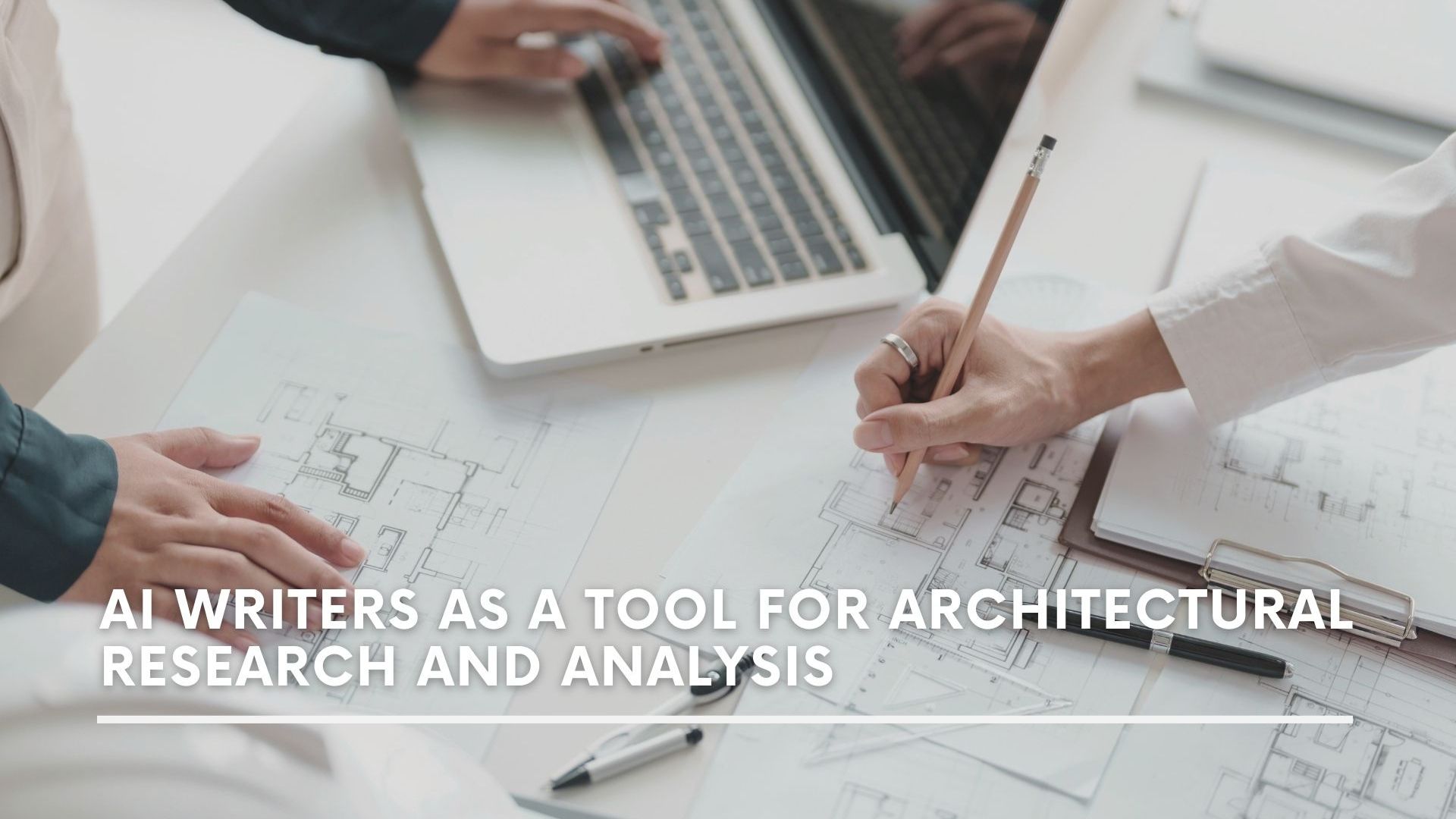More and more tools are infused with various forms of artificial intelligence in the modern era. Many of them are useful in specific circumstances, industries, and niches.
For instance, you can look online if you want to generate a literature review by myStylus.ai. This type of AI review generator or AI literature review writer can easily work within the parameters imposed by teachers and professors. If you’re in the academic world and you’re feeling overwhelmed by the pressures of an assignment, this is certainly a valid possibility that is worth exploring.
Some instructors in academia are not willing to let their students use these types of helpers. Others allow them to some extent, provided the student uses them as a writing assistant and not a replacement for composing an original paper or essay.
In this article, though, we’re going to be focused on a more specific purpose for these types of AI-powered assistants: as tools to help with architectural research and analysis. Is such a thing possible? Is it practical? Read on to get the answers.
How Do These Sorts of Tools Work?
Before we get into the details of how an AI-infused assistant can impact the architecture niche, let’s make sure you understand the basic functionality of these sorts of tools. They typically:
1. Gather what other individuals have said on a topic in the past
2. Use generative software to create a similar response with a fresh spin on it
3. Model their responses on the best and most credible examples of writing on that topic that they can find
An online resource like myStylus is an example of this kind of helper. There are plenty of others competing for attention within this niche as well.
Many people can’t tell the difference between what is written by a bot on a particular topic and what someone well-versed in that subject could produce. That’s part of the reason why the application of this kind of resource has become so contentious in academic and literary circles.
Earlier, though, we referenced how some teachers have taken to letting their students start to experiment with these kinds of tools, if in a somewhat limited capacity. That might be seen as a more sensible approach than the complete prohibition of them since their usage is becoming so much more prevalent with each passing year.
Now, let’s return to our topic, the intersection of AI-powered writing programs and architecture.

How Such a Program Might Help with Research
Let’s say that you’re an architect. You’ve received a contract to design a building for a company. This will be one of their brick-and-mortar locations that host office workers.
The company that commissioned you wants the building to have some flair or notable aesthetic appeal. They don’t want it to seem drab or uninteresting for the hundreds of employees who are going to work inside it for many hours every week.
If you’re an architect, then presumably you attended college and received a formal education in this subject. However, that doesn’t necessarily mean you will be able to look back on your schooling to get inspiration.
That is the type of scenario where it’s potentially helpful to get assistance from an artificial intelligence program. You might use one in the following way:
1. You can type in some keywords that describe the architectural style you want
2. You can stipulate some other relevant details based on what the company’s leaders envision for the building
What you have to understand is that these kinds of AI-based models are incredibly vast in terms of what information they retain. By making your request as detailed as possible, you will trigger the algorithm to respond in the way that it feels will be the most helpful to you.
This often allows you to get a report on specific buildings or styles that the bot feels are relevant. You can look at those and determine whether you can get inspiration from any of them. If the bot didn’t produce data that you found useful, then you can go back and rephrase what you were looking for a bit.
How It Can Help with Analysis
This kind of AI-powered algorithm can also be useful in the area of analysis. Let’s envision the same scenario that we just mentioned. You’re still trying to design a building for a company, but now, you have inspiration based on existing buildings or architectural styles that you can turn to when drawing up the blueprints.
You must still probably act within limitations imposed by the business entity that hired you. For instance, you likely must conceive of and design a building:
1. With a limited budget
2. That features certain spaces on which the company’s CEO insisted
3. That will be composed of materials that are readily accessible
Once you start to design the building, you can go back to the AI and use it again. You might tell it the limitations that are imposed on you, such as how much space the structure you’re designing must take up or the total budget amount attached to the project.
The bot can analyze all of that based on what it knows about the current architectural market. It might tell you to use a specific kind of building material and to stay away from another one because one kind of material is more expensive at the moment. It could tell you that you need a certain kind of insulation in the walls because of the average temperature in the winter where you plan to erect the building.
These kinds of factors might not immediately occur to you as someone designing this structure, but the bot can let you know about them. It’s much more likely that you will be able to produce a design that works for the business entity that hired you if you work alongside the bot.
You’ll Get Better at Using These Programs the More You Interact with Them
There’s one more factor that’s worth mentioning when it comes to the possible pairing of you and an AI-infused helper. You might use it to give you a hand when you’re thinking about:
1. Design choices
2. Resource allocation
3. Budgetary limitations
All of those matter a great deal in the architectural world. However, maybe when you start trying to utilize one of these programs for assistance, you’re not getting quite the results you want.
That doesn’t necessarily mean that the assistant isn’t working or is not good for you. It could simply be that you’re not used to communicating with it in precisely the right way.
In any niche, whether that’s building design or something else entirely, you need to practice feeding these algorithms information if you are going to get the most use out of them. The key is trying not to get frustrated.
Think about these tools in the same way you would a computer or a smartphone if you had never interacted with one before. The more you practice with it, the more you should be able to get it to do what you want.





